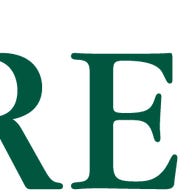Looking to compare all different types of automation? Now you can

Video: Moving customers to the center is the key to digital transformation
It is impossible to overstate the impact automation has on digital transformation.
- Automation directly impacts customer experience (CX). Software like Reflexis can automate price checks and cut customer wait times by 80 percent. Robots like LoweBot can guide customers to the proper aisle to pick up home goods.
- Automation contributes directly to your bottom line. Robotic process automation (RPA) for high-volume, low-complexity activities can return three to four full-time equivalent hours (FTEs) per bot. Lower-volume, complex tasks can return up to two-and-a-half FTEs.
- The societal impact on humans is profound. Forrester predicts automation will cannibalize 17 percent of all jobs in the US economy by 2027. However, it will also create 10 percent more jobs in a new automation economy, where skills in development become key.
However, until now, there was no unifying taxonomy to vet different types of automation. What offers a better business case: descriptive or streaming analytics? Could the same deterministic engine apply to both configuration management and continuous delivery? How does one compare the societal impact of chatbots to driverless cars?
Also: Analytics, digital twins separate pack in industrial IoT, says Forrester
To address this, Forrester created the first comprehensive framework to compare all types of automation. Nine dimensions prove critical: 1. Process (data acquisition, comprehension, and determinism); 2. Enterprise (robotics quotient, business case viability, and governance/auditability); and 3. People (human-machine interaction, human effect, and future-of-work effect):
We then compared over 60 different types of automation over eight categories: Engagement, sales, marketing, decision, process, industrial, infrastructure, and development:
Also: The 5 biggest challenges to digital transformation TechRepublic
In doing so, we were able to compare all automation at a fine-grained level. Take chatbots and configuration management, for example.
Also: How smart cities are quietly changing the world CNET
Chatbots take in unstructured data and use a mix of coded/deterministic and learning/nondeterministic behaviors to process it. Your employees require a low degree of robotics quotient (RQ) to engage with them. The business case viability is average, and chatbot behaviors are sometimes slightly opaque to govern/audit. Finally, the people effect is evident, with a high degree of human-machine interaction required and a moderate impact on the future of work:
Configuration management is entirely different. Its processes are almost entirely mechanical, requiring coded, structured data processed with a high degree of determinism. From an enterprise perspective, the technology requires a relatively low RQ to operate and is transparent to audit. Finally, the human impact is minor. Most of the action is on the back end, the social impact is narrow, and the role of the worker stays relatively focused on the individual:
Using the framework, you can rationalize your automation portfolio and create a new operating model around automation.
-- By Chris Gardner, senior analyst
Download Forrester's complimentary guide on how to manage the automation portfolio to out-think your competition.
This post originally appeared here.